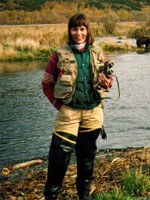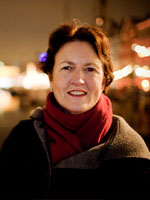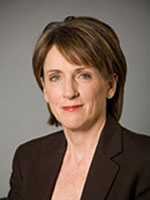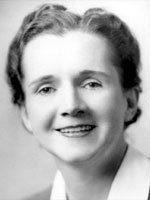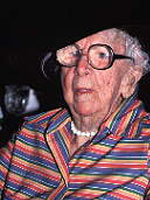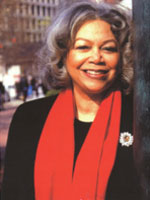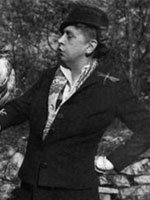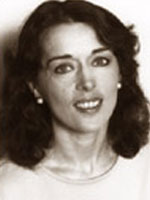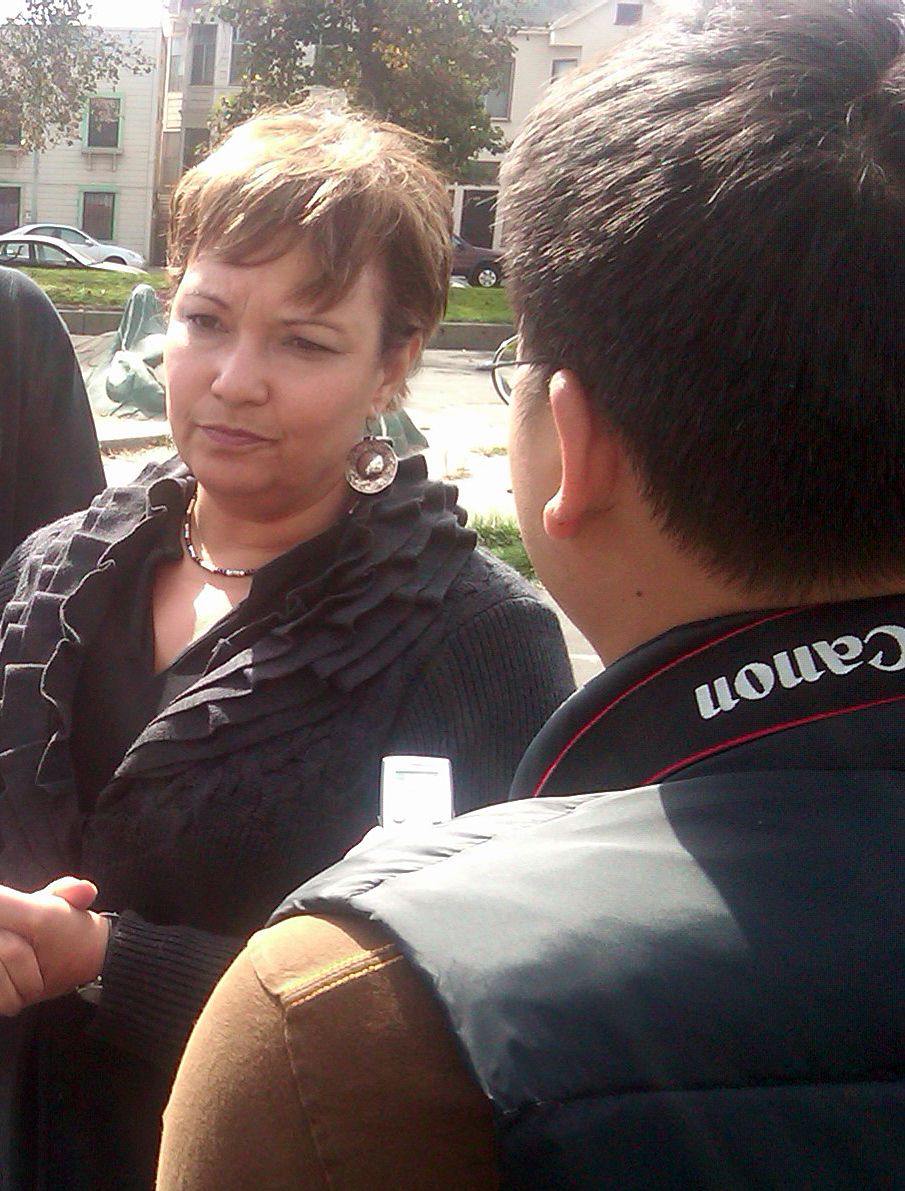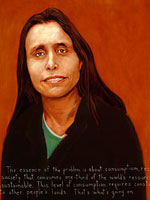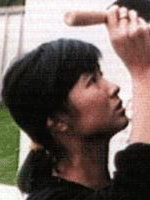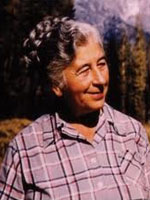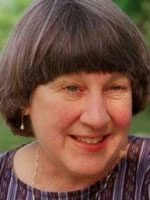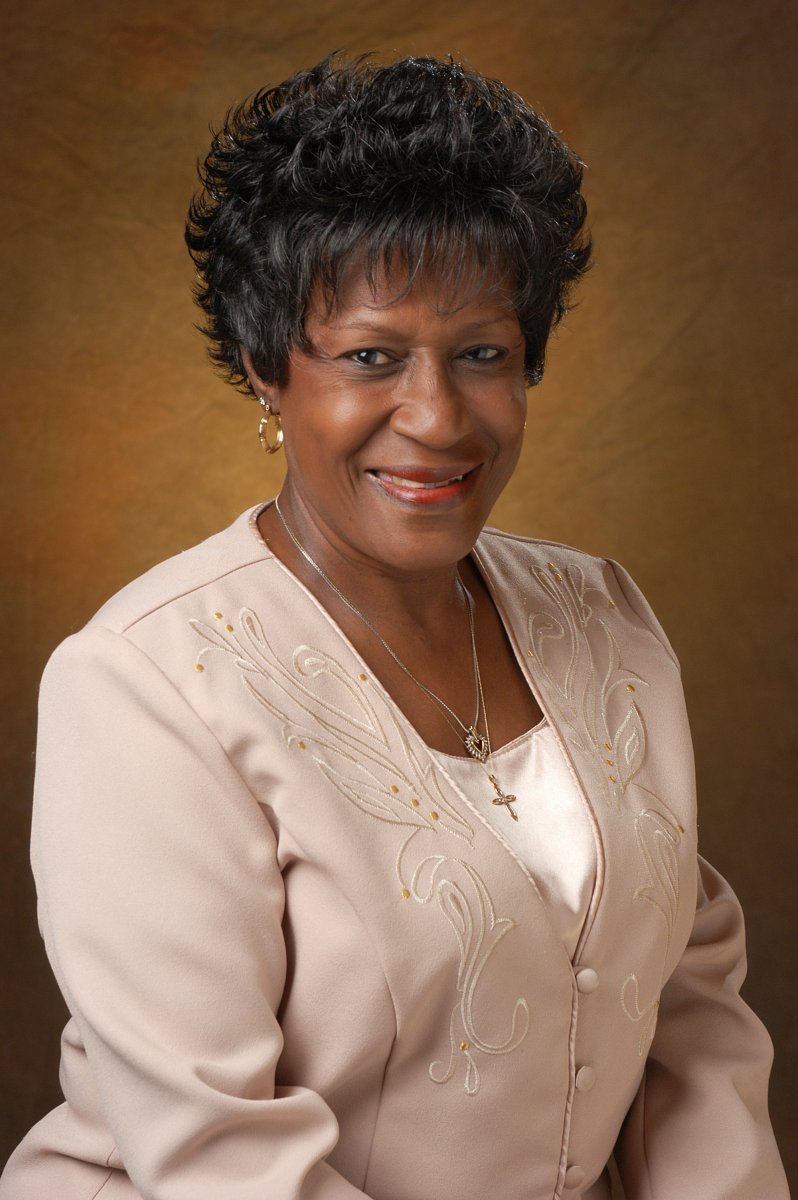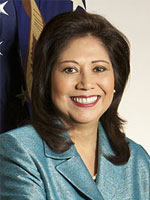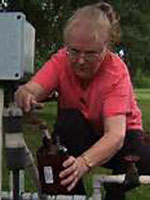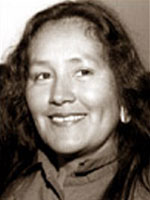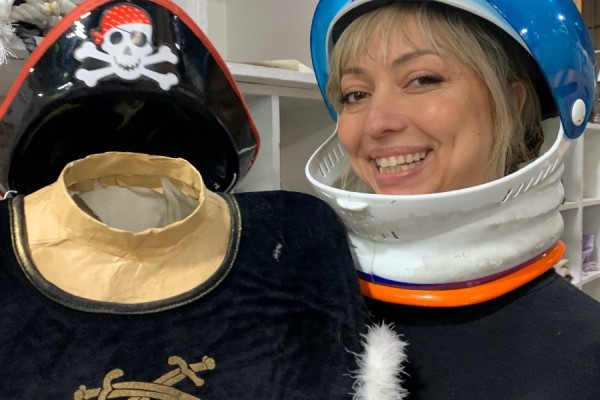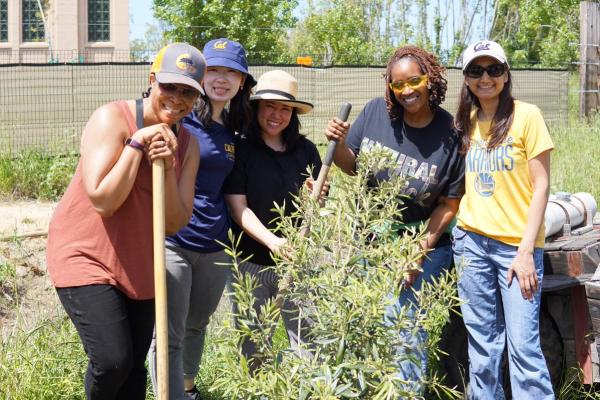Women have become more prominent and influential within the environmental movement than ever before. As part of our celebration of Women’s History Month, we are spotlighting 41 women environmentalists who have dedicated their lives to protecting the environment. Fortunately, this was a daunting task as the movement has grown to include women from every walk of life - from a former first lady and other political leaders, to those holding industries accountable for environmental degradation in their communities, to women creating a religious response to climate change.
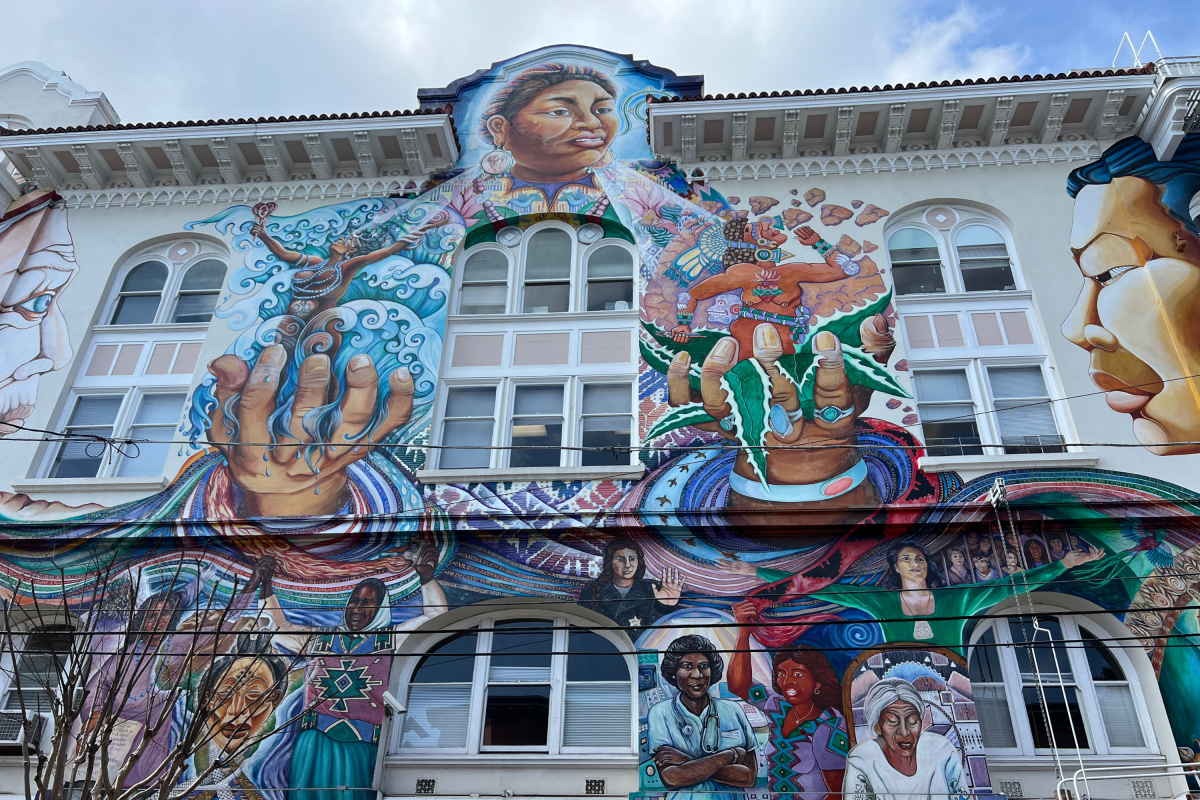
"MaestraPeace Mural" on the Women's Building in San Francisco's Mission District. Mural images courtesy of the artists ©1994-2009 Artists. All Rights Reserved. Thanks to artists Juana Alicia, Miranda Bergman, Edythe Boone, Susan Kelk Cervantes, Meera Desai, Yvonne Littleton and Irene Perez.Learn more about the mural on the Women's Building website.
Jane Addams (1860-1935)
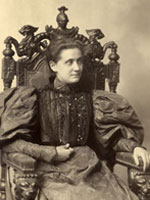
Jane Adams was one of the most prominent reformers of the early 20th century Progressive Era and would probably have been considered an environmental justice activist if the term had existed at the time. She was a pioneer in uncovering environmental health concerns and advocating for environmental equality for all people, no matter their income or ethnicity. She and her fellow activists uncovered lead poisoning and industrial poisons in many low-income communities. In 1931, she became the first American woman to be awarded the Nobel Peace Prize.
Photo courtesy of Cox.
Mollie Beattie (1947-1996)
Mollie Beattie was the first woman to be appointed director of the U.S. Fish and Wildlife Service, where she was instrumental in protecting landmark environmental laws, such as the Endangered Species and Clean Water Acts. She had a reputation for political toughness, but also the rare ability to bring together people with different points of view. Mollie passed away after less than three years in her position, but left a powerful legacy, including the reintroduction of the grey wolf to Yellowstone and the creation of 15 new wildlife refuges.
Photo courtesy of Coastal Bend Bays & Estuaries Program
Frances Beinecke
Frances Beinecke is the current President of the Natural Resources Defense Council. She attended Yale as one of the first graduating classes to include women. She was appointed by President Barack Obama to the National Commission on the BP Deepwater Horizon Oil Spill and Offshore Drilling. Motivated by a love of nature and dedication to service, in 2007, Beinecke was awarded the prestigious Rachel Carson Award, a premier award which honors distinguished female leaders impacting the environmental world.
Photo courtesy of NRDC
Julia "Judy" Bonds (1952-2011)
Julia "Judy" Bonds was an organizer and activist from the Appalachian Mountains who has been called "the godmother of the anti-mountaintop removal movement." Raised in a family of coalminers, she led the fight against mountaintop removal mining in the Appalachian mountain range, for which she was awarded the Goldman Environmental Prize in 2003. Bonds attributed her tenacity to the teachings of her mother, the religious convictions of her Southern Baptist and Cherokee backgrounds and the writings of Martin Luther King and Gandhi. "In Southern West Virginia we live in a war zone. Three and one-half million pounds of explosives are being used every day to blow up the mountains. Blasting our communities, blasting our homes, poisoning us, trying to intimidate us. I don't mind being poor. I mind being blasted and poisoned. There ARE no jobs on a dead planet."
Photo courtesy of Goldman Environmental Prize
Reverend Sally Bingham
Reverend Sally Bingham has brought widespread attention to the link between religious faith and the environment through her work on the Regeneration Project and the Interfaith Power & Light campaign. She is driven by her love of nature and the fact that environmental issues were being overlooked by most of the religious denominations. As one of the first faith leaders to fully recognize global warming as a core moral issue, she has mobilized thousands of religious people to put their faith into action through energy stewardship. The Rev. Bingham recently joined President Obama's Advisory Council on Faith-Based and Neighborhood Partnerships.
Photo courtesy of Interfaith Power and Light
Carol Martha Browner
Carol Martha Browner served as director of the White House Office of Energy and Climate Change Policy in the Obama administration from 2009 to 2011, where was sometimes informally referred to as the "Climate Czar." Browner served as Administrator of the EPA under President Clinton where she started a successful program to deal with contaminated lands in urban areas. She took the lead within the administration in defending existing environmental laws and budgets, and was the driving force behind a stringent tightening of air quality standards.
Photo courtesy of the EPA
Rachel Carson (1907-1964)
Rachel Carson worked to preserve the world for future generations. She wrote many articles designed to teach people about the wonder and beauty of the living world, including "Help Your Child to Wonder," and "Our Ever-Changing Shore." Embedded within all of Carson's writing was the view that human beings were but one part of nature distinguished primarily by their power to alter it, in some cases irreversibly. During the 1950s Rachel Carson conducted research into the effects of pesticides on the food chain and published her most influential work, Silent Spring, which condemned the indiscriminate use of pesticides. The book led to a presidential commission that largely endorsed her findings, and helped shape a growing environmental consciousness, which led to the banning of DDT.
Aurora Castillo (1914-1998)
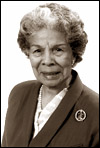
At a time when many senior citizens would be enjoying retirement, Castillo and other women formed the Mothers of East Los Angeles (MELA) in response to a proposal to locate an eighth prison in her predominantly Latino community. In addition to successfully fighting the prison, the members of MELA have defended their community against an oil pipeline, a toxic waste incinerator and a hazardous waste treatment plant. Castillo was awarded the Goldman Environmental Prize in 1995. MELA continues to serve as a watchdog for the community, while advising local businesses on sustainability.
Photo courtesy of Goldman Environmental Prize
Ruth Chickering Clusen (1922 - 1995)
Ruth Chickering Clusen served as the Assistant Secretary of Energy under President Jimmy Carter where she pushed the Department of Energy to “walk the walk” by reducing its fossil fuel consumption. Clusen was instrumental in bringing issues relating to the environment to national attention. “We speak dry words at times, but if one has eyes to see and the mind to perceive that what we are working for is the quality of our environment in this and the next generation, one cannot but feel a quickening of the senses.”
Heidi Cullen
Heidi Cullen is the lead correspondent for Climate Central. Prior to that, she was the climate expert and correspondent for The Weather Channel where she helped start Forecast Earth, the first weekly program on climate change and the environment. She was awarded the 2008 National Conservation Achievement Award for science by the National Wildlife Federation. Photo courtesy of Climate Centeral
Laurie David
Laurie David has produced numerous high profile projects that bring the issue of global warming into mainstream popular culture, including the Academy Award winner An Inconvenient Truth. She has spearheaded numerous public education and action campaigns urging Congress and auto-makers to raise fuel efficiency standards and make higher mileage cars. She is an exemplary example of using her influence as a celebrity to bring about lasting change.
Marjory Stoneman Douglas (1890- 1998)
Marjory Stoneman Douglas was a journalist who took on the fight for feminism, racial justice, and conservation long before these causes became popular. She was a leader in saving the Florida Everglades and her 1947 book, The Everglades: River of Grass has become the definitive description of this national treasure she fought so hard to protect. "Since 1972, I've been going around making speeches on the Everglades. No matter how poor my eyes are, I can still talk. I'll talk about the Everglades at the drop of a hat. Whoever wants me to talk, I'll come over and tell them about the necessity of preserving the Everglades. Sometimes, I tell them more than they wanted to know."
Dianne Dillon-Ridgley
Dianne Dillon-Ridgley is a leader in Corporate Social Responsibility who has worked for thirty years on issues of the environment and sustainability. One of industry’s first Sustainability Directors, she has been with Interface, Inc., a global manufacturer of modular carpet and a leader in sustainable design, since 1997. She was appointed by the White House to the US delegation for the Earth Summit in Rio, UNGASS-’97 & WSSD in South Africa, making her the only person to serve on all three US delegations. She was also appointed by former President Clinton to the PCSD, his council on Sustainable Development.
Sylvia A. Earle
Sylvia A. Earle is an oceanographer, who, besides trying to arouse greater public interest in the sea, hopes to raise public awareness of the damage being done to the aquasphere by pollution and environmental degradation. In the early 1990s she served as Chief Scientist of the National Oceanographic and Atmospheric Administration where she was responsible for monitoring the health of the nation’s waters. An expert on the impact of oil spills, she was called upon to lead several research trips during the Gulf War and following some of the biggest oils spills in US history including the Exxon Valdez. She is a National Geographic Explorer-in-Residence, sometimes called “Her Deepness” or “The Sturgeon General.” Earle is the author of more than 125 publications concerning marine science and technology including Sea Change: A Message of the Oceans.
Rosalie Edge (1877-1962)
Rosalie Edge was a New York socialite, suffragist, and amateur birdwatcher who, during the Great Depression, was considered the United States' most militant conservationist. She prodded the National Audubon Society to take much stronger measures to protect many bird species it had previously ignored (such as raptors). In 1929 she established the Emergency Conservation Committee to not only expose the conservation establishment’s ineffectiveness, but to advocate for species preservation—a dramatic shift from the standard thinking and practice in conservation of only protecting species that had a quantifiable economic value. A 1948 profile of her in The New Yorker described her as "the only honest, unselfish, indomitable hellcat in the history of conservation." She also asserted that it was every person's civic duty to protect nature. Edge led the national grassroots campaigns to create Olympic and Kings Canyon National Parks, and successfully lobbied Congress to purchase 8,000 acres of old-growth sugar pines on the perimeter of Yosemite National Park that were to be logged. Photo courtesy of Hawk Mountain Sanctuary Archives
Lois Gibbs
Lois Gibbs’ involvement in environmental causes began in 1978 when she discovered that her son’s elementary school and her neighborhood of Love Canal in Niagara Falls, New York was built on a toxic waste dump. Gibbs organized her neighbors and led her community in a battle against the local, state, and federal governments. These efforts led to the creation of the U.S. Environmental Protection Agency’s Comprehensive Environmental Response, Compensation and Liability Act, or Superfund, which is used to locate and clean up toxic waste sites throughout the United States. In 1980, Gibbs founded the Center for Health, Environment and Justice, a grassroots environmental crisis center that provides information, resources, technical assistance and training to community groups around the nation. She has received many awards for her environmental activism including the Goldman Environmental Prize and in 2003 was nominated for the Nobel Peace Prize. Photo courtesy of Goldman Environmental Prize
Dr. Dianne Glave
Dr. Dianne Glave is a historian and professor whose specialty is African American Environmentalism. Her love of nature has translated professionally and vocationally and she writes and speaks extensively on the topic. She is currently serving as the associate pastor at Ingomar Church in Pittsburgh, where part of her ministry is advocacy for impoverished and marginalized people affected by environmental disparity including access to recreational spaces and healthcare. She is the author of “Rooted in the Earth: Reclaiming the African American Environmental Heritage.”
Maria Gunnoe
Maria Gunnoe fights against environmentally-devastating mountaintop removal mining and valley fill operations in Appalachia—an area that holds some of the most important forest ecosystems in North America. In 2009 Gunnoe received the Goldman Environmental Prize for opposing this controversial practice which destroys the land and fills valleys and streams with toxic waste. “The coal industry… claims stopping mountaintop removal mining would end jobs. The people in West Virginia definitely need jobs. But the people who think that their jobs are more important than our water haven’t had to live without water.” Photo courtesy of Goldman Environmental Prize
Dolores Huerta
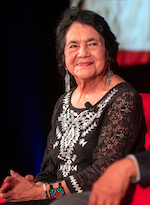
Dolores Huerta worked with Cesar Chavez to found United Farm Workers, an organization that promotes workers’ rights such as living wages and healthy work environments. An ardent believer in the power of nonviolent protest, Huerta has been arrested more than twenty times in her human rights work. She is president of the Dolores Huerta Foundation which focuses on organizing and promoting the health of workers and their families in California’s Central Valley.
Celia M. Hunter (1919-2001)
Celia M. Hunter didn’t plan on being a conservationist — she just wanted a life of adventure. Celia was a WASP in World War II, but the army wouldn’t let women fly to Alaska, so Celia and a friend borrowed a couple of rickety airplanes and battled through 27 days of biting cold from Seattle to Fairbanks. She founded what is probably one of North America’s first eco-tourism sites in 1952—Camp Denali—90 miles from the front door of Denali National Park. Celia became a cornerstone of the conservation movement in Alaska and founded the Alaska Conservation Society, which won many of Alaska’s most important environmental battles. On the night she died, she had been up late writing letters to Congressmen in support of protecting the Arctic National Wildlife Refuge from drilling. “You just have to keep a fire in your belly, and you just go for it, and when you do, you can make a tremendous difference.” Photo courtesy of Alaska Conservation Foundation
Lisa Jackson
Lisa Jackson was the first African American (and one of only a few women) to serve as the federal EPA Administrator. Appointed by President Obama in 2009, she made it a priority to focus on vulnerable groups – including children, the elderly, and low-income communities – that are particularly susceptible to environmental and health threats. Jackson became interested in environmental matters following the national and international coverage of the Love Canal Disaster in the mid-1970. She led the EPA to expand its commitment to engaging with and listening to all stakeholders in the decision-making process. After leaving the EPA, in May 2013, Jackson joined Apple as their environmental director. Photo credit: EPA
Lady Bird Johnson
Lady Bird Johnson was a lifelong advocate for beautifying the nation's cities and highways and was the first president's wife to advocate actively for legislation. Her work became the Highway Beautification Act of 1965—informally known as Lady Bird's Bill. In the 1960s, Lady Bird planted bulbs and trees along roadsides to call attention to the growing crisis of habitat and species loss. "The answers cannot be found in piece-milled reform. The job really requires thoughtful interrelation of the whole environment. Not only in buildings, but parks, not only parks, but highways, not only highways, but open spaces and green belts. A beautification in my mind is far more than a matter of cosmetic. To me, it describes the whole effort to bring the natural world and the manmade world to harmony.” Photo courtesy of US Postal Service
Elizabeth Kolbert
Elizabeth Kolbert is a journalist and author best known for her 2006 book Field Notes from a Catastrophe, and as an observer and commentator on environmentalism for The New Yorker magazine. Her most recent book The Sixth Extinction: An Unnatural History covers past mass extinctions and demonstrates that the earth and humans are in the midst of a "sixth" mass extinction. She chronicles previous mass species extinction events, but argues that whereas the previous five mass extinctions were caused by natural phenomena, this one is manmade.
Winona LaDuke
Winona LaDuke is a Native American environmentalist, activist, and writer who advocates on issues of climate change, renewable energy, sustainable development, food systems, and environmental justice. A member of the Mississippi Band Anishinaabeg, she co-founded Honor the Earth, a Native American-led organization that works to raise public awareness and increase financial resources for the Native environmental movement. In 1997 LaDuke was named Woman of the Year by Ms. Magazine and in 2007 she was inducted into the National Women's Hall of Fame. "The essence of the problem is about consumption, recognizing that a society that consumes one-third of the world’s resources is unsustainable. This level of consumption requires constant intervention into other people’s lands. That’s what’s going on." Portrait by Robert Shetterly
Maya Lin
Maya Lin may be best known for designing the Vietnam Veterans Memorial in Washington, DC, but she is also a conservationist whose art aims to bring awareness to pressing environmental issues. Her memorial, “What is Missing” features a webpage and multiple installations that focus on biodiversity and habitat loss. “I think the natural environment is beautiful; nothing I can do is going to be better than what nature has done. So when I approach a site, I want to do it with a lot of respect, with a gentle touch, and whatever buildings I put down, I want them to frame and give you views out to the landscape — to have you be a part of and connected to the landscape. I really believe you can teach people that way. They may not be aware of what is going on with the architecture, but you can make them feel a part of nature — not above it, not superior to it, and not conquering it.” Photo courtesy of Academy of Achievement
L. Hunter Lovins
L. Hunter Lovins is president and founder of the Natural Capitalism Solutions (NCS), which guides senior decision-makers in business, government and civil society to restore and enhance the natural and human capital. She cofounded the Rocky Mountain Institute, which she led for 20 years and was named Time Magazine 2000 Hero of the Planet. She has co-authored nine books and hundreds of papers, including Natural Capitalism and Climate Protection Manual for Cities. She is a founding Professor of Business at Presidio Graduate School, one of the first accredited programs offering an MBA in Sustainable Management.
Sophie Maxwell
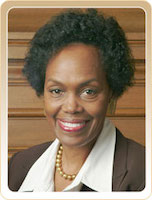
Sophie Maxwell is a former electrician who served three terms on the San Francisco Board of Supervisors representing southeast neighborhoods in San Francisco. The San Francisco native grew up surrounded by political activism. That spirit, along with her motherly intuition to make things better for her son and others in her neighborhood, helped get her elected. During her tenure, she worked for more equitable distribution of public resources, increasing economic development opportunities for all San Franciscans, and nurturing and empowering the city's most vulnerable residents. Sophie continues to advocate for environmental justice, clean energy, and children's health and educational programs. Along with many other activists, Maxwell was instrumental in the successful effort to close the Hunters Point power plant, one of the oldest and dirtiest in the state.
Margaret “Mardy” Murie (1902-2003)
Margaret “Mardy” Murie is often considered one of the “grandmothers of conservation.” Her tireless advocacy led to the protection of some of the most important wilderness areas left on the planet, including Alaska’s Arctic National Wildlife Refuge. Her testimony was instrumental in the passage of the Alaska National Interest Lands Conservation Act, which set aside 104 million acres of land in Alaska and doubled the size of the Arctic National Wildlife Refuge. “I am testifying as an emotional woman and I would like to ask you, gentlemen, what’s wrong with emotion? Beauty is a resource in and of itself. Alaska must be allowed to be Alaska, that is her greatest economy. I hope the United States of America is not so rich that she can afford to let these wildernesses pass by, or so poor she cannot afford to keep them.”
Donella H. "Dana" Meadows (1941-2001)
Donella H. "Dana" Meadows was a pioneering American environmental scientist, teacher and writer. She is best known as lead author of the influential book The Limits to Growth, which made headlines around the world and began a debate about the limits of Earth's capacity to support human economic expansion—a debate that continues to this day. “Speak the truth. Speak it loud and often, calmly but insistently, and speak it, as the Quakers say, to power. Material accumulation is not the purpose of human existence. All growth is not good. The environment is a necessity, not a luxury. There is such a thing as enough.” Photo courtesy of Donella Meadows Institute
Irma Muñoz
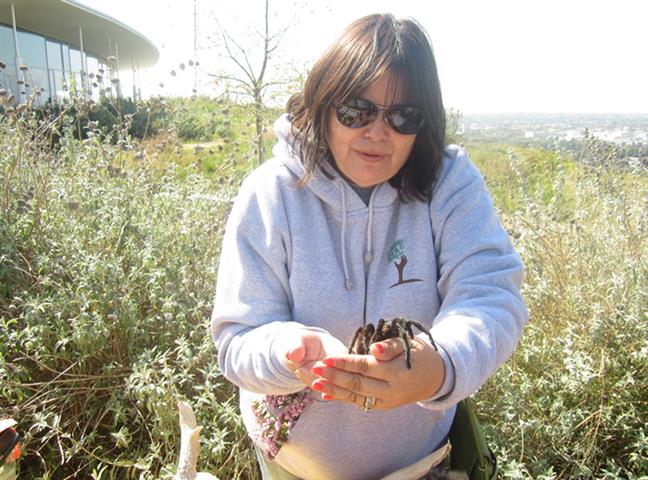
Irma R. Muñoz is the founder of Mujeres de la Tierra, a Los Angeles-based organization that empowers women who have traditionally been left out of the “green” conversation, to take action on environmental challenges. Muñoz serves on the Santa Monica Mountains Conservancy Board of Directors and is Vice-Chair of the Los Angeles Regional Water Quality Control Board. In 2013, she launched the Agua es Vida Campaign to address the lack of drought education and awareness in the Latino community. The Campaign includes performing mini- telenovelas in local neighborhoods to engage community members in water conservation.
Barbara Y.E. Pyle
Barbara Y.E. Pyle is filmmaker and activist who pioneered the use of broadcast programming to inform critical social and environmental issues on a global scale. She co-created the animated series Captain Planet and the Planeteers, an animated series whose goal was to yield a generation of environmentally-literate youth. Captain Planet became the world's first eco-superhero, and Pyle based the five Planeteers on real-life people who inspired her during the show's pre-production in 1989.
Marjorie Richard
Marjorie Richard is the first African-American to win the Goldman Environmental Prize. Growing up in a historically African-American neighborhood in Norco, Louisiana, Richard was painfully aware of the devastating health problems her community faced as a result of the Shell refinery next door. According to Richard, the defining moment which convinced her to become an activist occurred in 1973 when a Shell pipeline exploded, knocking one house off its foundation and killing an elderly woman and a teenage boy who was mowing the lawn. Years later, she led the front line of a long, hard-won battle to hold Shell accountable. A master of political theater, Richard installed a Web camera in her trailer home to broadcast live feeds of the refinery spewing petrochemical byproducts. While speaking at an international environmental conference, Richard approached Shell officials and invited them to take a sniff from a bag of Norco air. Photo credit: Goldman Environmental Prize
Linda Sánchez
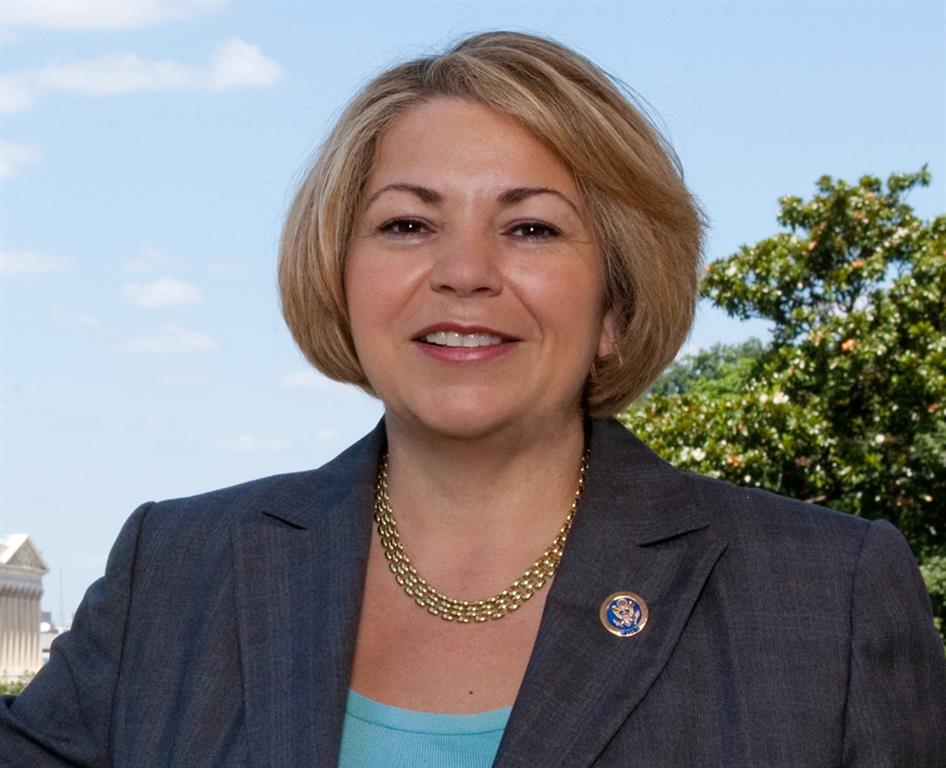
Representing the State of California in Congress, Linda Sánchez has been a major influence on environmental issues in the House of Representatives. She is a member of the International Conservation Caucus, a congressional organization that advances resource conservation. Sánchez has addressed the importance of reducing air and water pollution, particularly in Latino communities and encourages Latinos to demand government action on environmental issues.
Susan D. Shaw
Susan D. Shaw is an explorer, ocean conservationist, and author and has worked extensively on issues related to toxic chemical exposure and its impacts on human health and wildlife. In 1983, she worked with Ansel Adams and published “Overexposure” the first book to document the health hazards of photographic chemicals. Shaw is credited as the first scientist to show that brominated flame retardant chemicals used in consumer products have contaminated marine mammals and commercially important fish stocks in the northwest Atlantic Ocean. An outspoken voice on ocean pollution, Shaw is known for diving into the Gulf of Mexico oil slick following the 2010 BP Deepwater Horizon oil rig explosion and warning about the dangerous use of chemical dispersants in offshore oil spills. Photo courtesy of TED talks
Hilda Lucia Solis
Hilda Lucia Solis was the first Latina woman to serve in the US Senate, where she sought to pass environmental justice legislation. She ultimately became the first Latina woman to serve in the US Cabinet. As a congresswoman, Solis is most known for her work on environmental issues as a member of the Committee on Energy and Commerce, the Committee on Natural Resources, and the Select Committee on Energy Independence and Global Warming. She made the promotion of green-collar jobs a priority and sponsored the Southern California portion of the California Wild Heritage Act to create or enlarge many wilderness areas. Photo courtesy of the US Department of Labor
Sandra Steingraber
Sandra Steingraber is a biologist, poet, author, and cancer survivor who writes and lectures on the environmental factors that contribute to reproductive health problems and environmental links to cancer. Her 1997 book, Living Downstream, blends anecdotes and descriptions of industrial and agricultural pollution with a wealth of data from scientific and medical literature.
Photo Credit: © Benjamin Gervais / The PPC
Wilma Subra
Wilma Subra is an environmental scientist from South Louisiana, who teaches people in some of the nation's poorest communities to help themselves by using the latest technology to track air and water quality in their own backyards. She's a winner of a 1999 MacArthur Genius grant and served as vice-chair of the EPA National Advisory Council for Environmental Policy and Technology. Even after a 2006 attempt on her life, this soft-spoken grandmother continues to take on refineries, chemical manufacturers and oil and gas companies, including BP over its cleanup of the Gulf of Mexico oil spew in 2010. She never leads a community's fight, but provides facts and support for those who do. "If you do all the walking and talking," she says, "you're just another hired gun." Photo courtesy of CNN
JoAnn Tall
JoAnn Tall is an environmental activist of the Oglala Lakota tribe who has worked to ensure the people have a chance to approve major projects for energy development. She was awarded the Goldman Environmental Prize in 1993 for her protests against uranium mining and plans for testing nuclear weapons in the Black Hills area, near the Pine Ridge Indian Reservation where she lives. Tall was involved with the Black Hills Alliance, a group of activists who worked to ensure that any energy development projects proposed for the region would need to be approved by the voters rather than being automatically approved by the State. In 1989 Tall co-founded the Native Resource Coalition in order to help educate the Lakota regarding health and environmental issues. Photo courtesy of Goldman Environmental Prize
Kimberly Wasserman Nieto
After seeing how many of the children in her low-income, Chicago neighborhood suffered from asthma (including her own son), Wasserman Nieto suspected it was related to the two large coal-fired power plants less than a mile away. Through her work with the Little Village Environmental Justice Organization (LVEJO), Wasserman Nieto began helping her neighbors make the connection between pollution from the power plants and their respiratory health. Ultimately, in 2012, the community was successful in getting the power plants shut down. Wasserman Nieto won the 2013 Goldman Environmental Prize for her work and is currently the Executive Director of LVEJO where she continues to organize her community for transformation.
Dr. Beverly L. Wright
Dr. Beverly L. Wright is an environmental justice scholar and advocate, author, civic leader and professor. She is the founder of the Deep South Center for Environmental Justice, which addresses environmental and health inequities along the Mississippi River Chemical Corridor and is a community/university partnership providing education, training and job placement for underserved populations in environmental justice communities within the United States. After the devastation of Hurricane Katrina, the Center has focused its energies largely on research and policy efforts, community outreach and assistance as well as education and training of displaced African-American and minority residents of New Orleans. In 2010, the Center’s activities on the education, training and public policy needs of those communities affected the BP Deep Water Horizon oil spill disaster. Most recently, she has extended the Center’s work to include communities affected by Hurricane Sandy. An accomplished author she recently co-authored two books with Dr. Robert Bullard; Race, Place & the Environment After Hurricane Katrina and, The Wrong Complexion for Protection: How the Government Response Endangers African-American Communities.
Elizabeth Yeampierre
Elizabeth Yeampierre is the Executive Director of UPROSE, Brooklyn's oldest Latino community-based organization. As a long-time advocate and trailblazer, her vision for an inter-generational, multi-cultural and community-led organization is the driving force behind UPROSE’s work to organize the community around sustainable development, environmental justice and climate adaptation. Prior to UPROSE, Ms. Yeampierre was the Director of Legal Education and Training at the Puerto Rican Legal Defense Fund, Director of Legal Services for the American Indian Law Alliance and Dean of Puerto Rican Student Affairs at Yale University. She is the first Latina Chair of the US EPA National Environmental Justice Advisory Council.
Featured: Jane Addams (1860-1935),Mollie Beattie (1947-1996), Frances Beinecke, Julia "Judy" Bonds (1952-2011), Reverend Sally Bingham, Carol Martha Browner, Rachel Carson (1907-1964), Ruth Chickering Clusen (1922 - 1995), Heidi Cullen, Laurie David, Marjory Stoneman Douglas (1890- 1998), Dianne Dillon-Ridgley, Sylvia A. Earle, Rosalie Edge (1877-1962), Lois Gibbs, Maria Gunnoe, Celia M. Hunter (1919-2001), Lady Bird Johnson, Elizabeth Kolbert, Winona LaDuke, Maya Lin, L. Hunter Lovins, Margaret “Mardy” Murie (1902-2003), Donella H. "Dana" Meadows (1941-2001), Barbara Y.E. Pyle, Susan D. Shaw, Hilda Lucia Solis, Sandra Steingraber, Wilma Subra, JoAnn Tall
